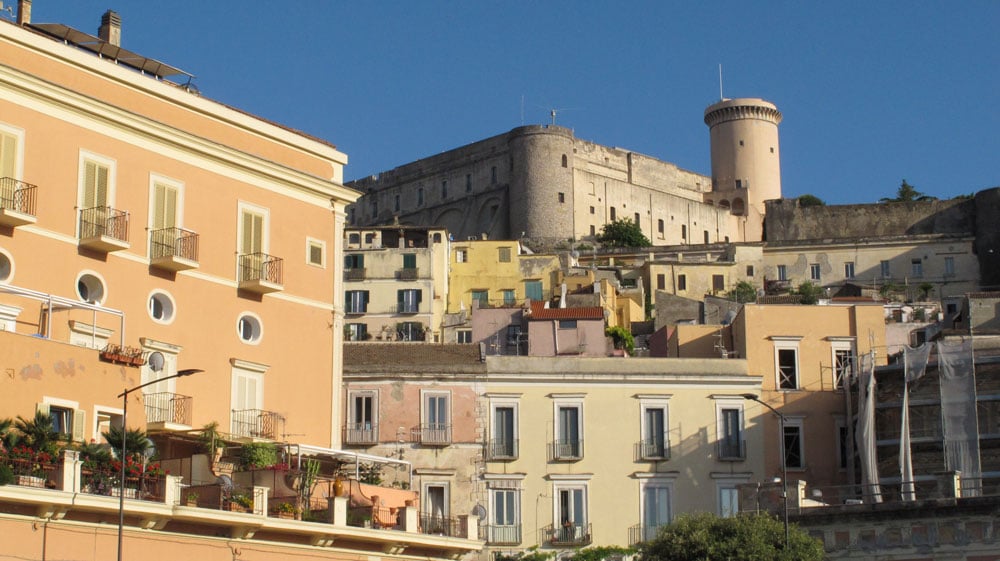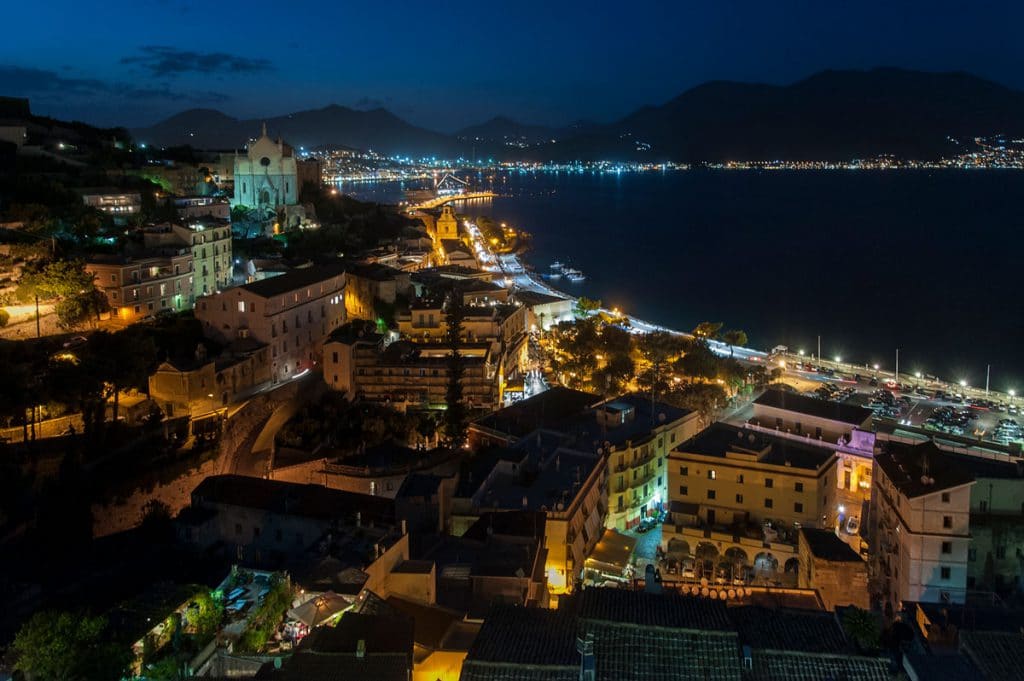Gaeta enters the heart of those who visit it. Every corner lends itself to becoming the setting for unforgettable memories, with the sea as the master.
Here are the 4 unmissable places to visit during your stay in Gaeta
The sea of Gaeta is certainly the predominant element that accompanies the stay of its visitors, both in summer and winter. We inhabitants of the Pearl of the Tyrrhenian Sea describe most of the days around the expanse of blue water, and even tourists are quick to welcome our uses by spending moments of everyday life on the shores of the sea of the city.
Witness the paranze that reach the small port of the fishermen accompanied by the inseparable seagulls – who, as guardians, accompany the boats hoping for a succulent reward – and the folkloric fish market, an unmissable stop for those who want to appreciate the genuineness of life in Gaeta.
And what about the moments of relaxation cadenced by the lapping of the waves on the shoreline? In Gaeta, to carve out moments of quiet and regenerate the spirit, you do not need to go far. Around you will find corners of blue where you can walk barefoot and find contact with nature, or sip a drink kissed by the hot sun of the coast. Gaeta, in fact, enjoys mild temperatures almost all year round that make it pleasant to experience the beach even in winter.
Serapo, with its beaches and well-kept beach equipped with kiosks and equipment, is the perfect meeting place during the weekend to relax and indulge in a cuddle. And it is the place that I also choose to enjoy a walk accompanied by my inseparable little dog Hope.
Grotta del Turco and Montagna Spaccata, two places immersed in legend
In addition to the sea, Gaeta offers places full of history and mystery. Tramite percorsi che conducono verso scorci di straordinaria bellezza, si raggiungono luoghi come la Montagna Spaccata e la Grotta del Turco. Entrambi fanno parte di un itinerario imperdibile per chi viene a visitare la città.
The Split Mountain and the Sanctuary of the Holy Trinity
It is said that the Split Mountain was formed when Jesus breathed his last breath on the Cross. When the veil of the temple in Jerusalem was torn under its last breath, and the earth shook, this mountain split, forming three fissures.
The site is also known for the Sanctuary of the Holy Trinity, erected in the eleventh century, a destination for theologians and saints including Ignatius of Loyola, Bernardino of Siena and San Filippo Neri. The latter lived there making a stone his bed that is still visible.
The Grotta del Turco and that suggestive imprint carved into the rock
The Grotta del Turco is a fissure of the Split Mountain, through which you can descend to sea level, and admire the play of light that animates the turquoise waters.
This place, full of charm and charm, is surrounded by an aura of mystery. Here you can admire one of the most incredible natural works that the power of the sea has achieved by shaping the rock and giving it a shape that inspired a fascinating legend.
As we read in the transcript reported on the rock, it is said that a Saracen pirate who hid among the fissures of the promontory, “unbelievers and incredulous” about the religious belief that surrounded the place, touched the rock that deformed under his hand. From this legend derives the name of Grotta del Turco.
The Park of Monte Orlando
Continuing on the itinerary to discover Gaeta, we head a little higher to admire a wonderful example of Mediterranean scrub. I’m talking about Monte Orlando, the promontory that stands on the waters of the Gulf of Gaeta and ends with a scenic cliff overlooking the sea. The park is part of the Reagionale Riviera di Ulisse and is a protected park
Monte Orlando is the green lung of Gaeta. A place easily accessible and within everyone’s reach where you can carve out hours of quiet surrounded by vegetation. In summer, us gaetani love to find refreshment along its shady path and breathe the scent of the forest. The vegetation that populates this hill is quite heterogeneous. The north-western area is mainly occupied by holm oaks, while in the more humid sectors it is possible to find myrtle and mastic, laurel and hawthorn plants. Among the climbing species you can admire the ivy, the smilace, the vitalba and the wandering rubia.
e inaccessible nature of the cliffs has made it possible to preserve plant species that have been preserved thanks to the inaccessibility of the cliffs, such as the autochthonous Aleppo pine, the dwarf palm, the rare Convolvulus siculum and the rare fern Asplenium petrarchae.
The underwater environment of Gaeta also offers fantastic shows. Scuba diving enthusiasts can admire the many marine species that inhabit the seabed in the stretch of sea in front of the cliffs.
The mausoleum of Lucius Munazio Planco
Walking along the path of Monte Orlando you walk in the footsteps of the ancient Romans who made passage to Gaeta. It is on the top of the mountain, in fact, that stands the mausoleum of the consul Lucius Munazio Planco. Its construction dates back to 22 a.C. and is still in excellent condition today; the fact that it is placed on a promenade much appreciated by tourists, makes it an attractive archaeological site to visit.
The monumental tomb consists of 4 cells arranged according to the 4 cardinal points. At the entrance of the main one you will be welcomed by the statue of Lucio Munazio Planco, a copy of the original that is preserved in Rome, while in the other cells you can admire finds from different historical periods.





